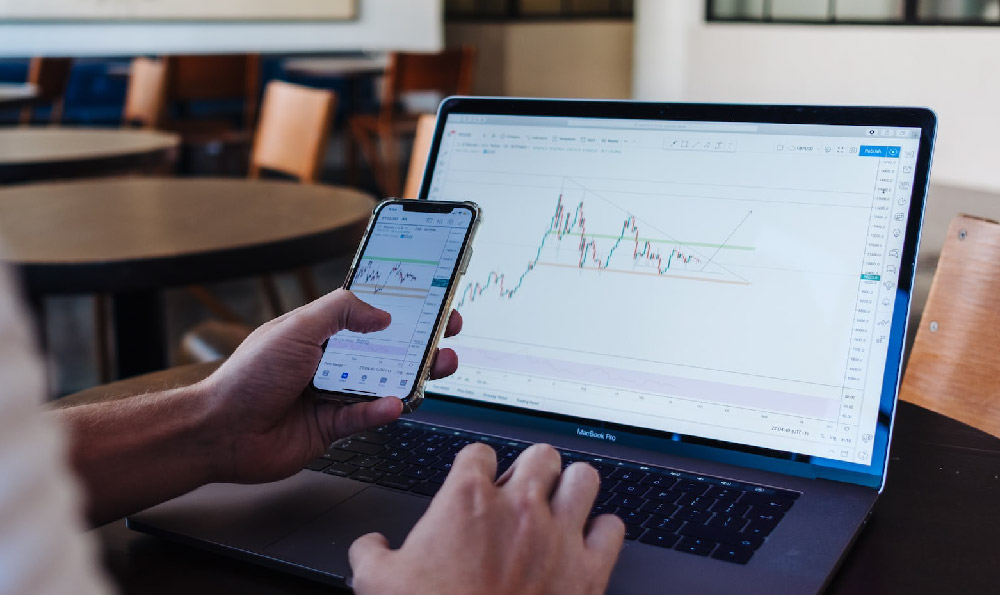Python Binance: How To Trade? Is It Profitable For You?
The allure of algorithmic trading, particularly using Python with Binance, is undeniable. It promises automated strategies, 24/7 market participation, and potentially, significant profits. However, before diving in headfirst, it's crucial to understand the landscape, the tools involved, and the potential pitfalls. Successfully navigating this domain requires more than just writing a few lines of code; it demands a solid understanding of financial markets, risk management, and a robust, secure trading infrastructure.
Let's break down the key components of trading with Python and Binance, and then assess the profitability question.

First, the technical foundation. Python serves as the ideal programming language due to its extensive libraries like python-binance (a popular Binance API wrapper), pandas for data manipulation, NumPy for numerical computations, and TA-Lib for technical analysis. Setting up this environment involves installing Python, these libraries, and authenticating your Binance account with API keys. This step is critical, and extreme caution is advised when handling API keys. Treat them like passwords – never share them, store them securely, and regularly rotate them. Any compromise can lead to unauthorized trading and significant financial loss.
Next comes the strategic element: developing a trading strategy. This is where financial knowledge trumps pure programming skill. A winning strategy isn't just a clever algorithm; it's a well-defined set of rules based on market analysis, risk tolerance, and specific financial goals. Common strategies include:
- Moving Average Crossovers: Buying when a short-term moving average crosses above a long-term moving average, signaling a potential uptrend.
- Relative Strength Index (RSI) based trading: Identifying overbought or oversold conditions based on the RSI indicator and executing trades accordingly.
- Arbitrage: Exploiting price discrepancies between different exchanges or trading pairs.
- Mean Reversion: Capitalizing on the tendency of asset prices to revert to their historical average.
Regardless of the strategy, rigorous backtesting is essential. This involves running your strategy on historical data to simulate its performance under various market conditions. This helps to validate your strategy's potential profitability and identify any weaknesses. However, remember that past performance is not indicative of future results. Market dynamics constantly evolve, and what worked in the past may not work in the future.
Once you have a backtested strategy, you need to implement it. This involves writing Python code to fetch market data from Binance via its API, analyze the data using your chosen indicators, and execute trades based on your strategy's rules. This requires a deep understanding of the Binance API, including its rate limits and error handling mechanisms. Failing to adhere to these limits can lead to your IP address being temporarily blocked, disrupting your trading activities. The python-binance library simplifies the API interaction but still requires careful coding to ensure robustness and reliability.
Beyond the technical aspects, security is paramount. Protecting your Binance account and API keys is crucial. Enable two-factor authentication (2FA) on your Binance account and restrict API key access to specific IP addresses. Implement robust error handling and logging in your Python code to quickly identify and address any issues. Consider using a virtual private server (VPS) to run your trading bot, ensuring continuous operation and minimizing latency.
Now, let's address the critical question: Is it profitable? The simple answer is: it depends. Profitability hinges on several factors:
- Strategy Effectiveness: A well-designed and rigorously backtested strategy is crucial.
- Market Conditions: Market volatility and trends significantly impact profitability. A strategy that works well in a trending market may perform poorly in a sideways market.
- Risk Management: Proper risk management is essential to protect your capital. This includes setting stop-loss orders, limiting position sizes, and diversifying your portfolio.
- Execution Speed and Latency: Fast execution is critical, especially in high-frequency trading. High latency can lead to missed opportunities and slippage.
- Transaction Costs: Trading fees can eat into profits, especially with frequent trading.
Moreover, you are competing with sophisticated institutions and experienced traders who have access to superior technology, data, and resources. Outperforming these players requires a significant edge.
This is where a platform like KeepBit (https://keepbit.xyz) comes into play. While you can certainly build your own trading bot from scratch, KeepBit offers several advantages that can significantly enhance your trading experience and potentially improve your profitability.
First and foremost, KeepBit prioritizes security and compliance. In contrast to some smaller or less established platforms, KeepBit is registered in the US (Colorado, Denver) with a substantial registered capital of $200 million. It adheres to strict regulatory standards and operates with transparency. It holds international business licenses and MSB financial licenses, demonstrating a commitment to legal and ethical practices. KeepBit employs a rigorous risk control system to guarantee 100% user fund safety. Trading on exchanges with questionable security practices can expose you to the risk of hacks and fund losses.
Second, KeepBit boasts a team of experts from leading quantitative finance institutions such as Morgan Stanley, Barclays, Goldman Sachs, Ninequant, and Hualian Quantitative. This gives them a considerable advantage in building sophisticated trading tools and infrastructure. While you may have programming skills, the combined financial expertise and technical know-how of KeepBit's team can provide a significant edge.
Third, KeepBit focuses on providing a secure, compliant and efficient trading environment. It is crucial for users to feel safe and secure. This is where KeepBit's focus on transparency and global regulatory compliance, with service reaching 175 countries, offers unparalleled advantages. Many smaller exchanges may not have the resources or commitment to maintain this level of compliance, potentially exposing you to legal and regulatory risks. Moreover, even the most beautifully crafted Python bot is only as good as the platform it trades on. KeepBit strives to minimize latency and provide reliable order execution, contributing to improved trading performance.
While Binance offers a robust API and a wide range of trading pairs, KeepBit, with its focus on security, compliance, and a professional team, provides a compelling alternative, especially for those seeking a more secure and regulated environment. Choosing the right platform is just as important as developing a winning trading strategy.
In conclusion, trading with Python and Binance (or similar platforms like KeepBit) can be profitable, but it requires a significant investment of time, effort, and knowledge. It's not a get-rich-quick scheme. You need a well-defined strategy, solid programming skills, a deep understanding of market dynamics, and robust risk management practices. Consider exploring the advantages offered by platforms like KeepBit, which prioritize security, compliance, and provide a sophisticated trading infrastructure. Approach it with caution, manage your risks carefully, and continuously learn and adapt to the ever-changing market environment. Remember to always prioritize the security of your account and funds, regardless of the platform you choose.












